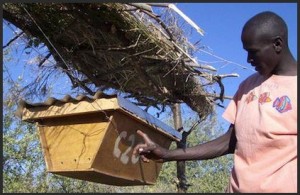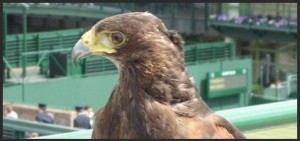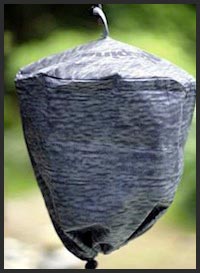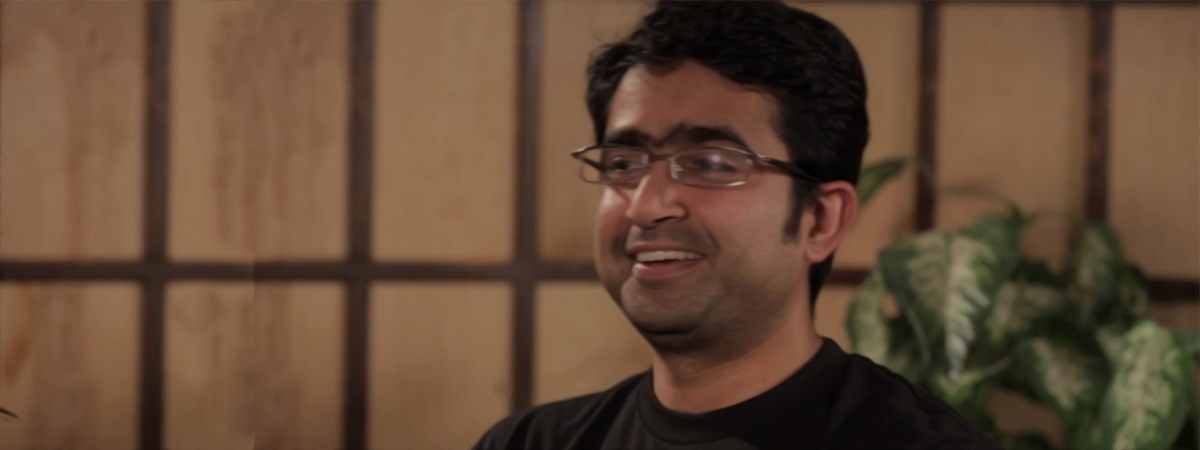Why Give a Damn:
There’s a saying in the technology world which asks “What would Google do?”. When I’m confronted with a problem, I’d rather ask “What would nature do?”. Why? Read this article to find out more.
The author of this post, Ken Banks, is the founder of kiwanja.net and Means Of Exchange, and devotes himself to the application of mobile technology for positive social and environmental change in the developing world. Ken is the author of The Rise of the Reluctant Innovator.
Looking to develop a technology solution to a problem? Mother Nature usually knows best. Tweet This Quote
There’s a saying in the technology world which asks “What would Google do?”. When I’m confronted with a problem, I’d rather ask “What would nature do?”. Why? Well, if you believe Google has the answer then you’re immediately assuming that modern technology – in some shape or form – is the solution. More often than not that’s the wrong place to start.
 A couple of years ago, I sat on a panel at the Aspen Environment Forum which focused on the use of social media in the environmental movement. (You can watch the video here, or read my summary of whole the event here). Many people had already made their minds up that Facebook, Twitter, YouTube and so on were ‘the’ answer, before thinking through what they were really trying to do, what their message was, or who the different audiences would be. That’s also the wrong place to start.
A couple of years ago, I sat on a panel at the Aspen Environment Forum which focused on the use of social media in the environmental movement. (You can watch the video here, or read my summary of whole the event here). Many people had already made their minds up that Facebook, Twitter, YouTube and so on were ‘the’ answer, before thinking through what they were really trying to do, what their message was, or who the different audiences would be. That’s also the wrong place to start.
Asking what nature might do immediately pulls us away from looking for a modern, high-tech solution and more towards a simpler, low-tech (and potentially more appropriate and sustainable) one. It also encourages us to think entirely out-of-the-box.
If you were to ask “What might nature do?”, what kind of solutions might you come up with which you otherwise might not have?
- Elephants
Some of my earliest mobile work back in 2003 was in Southern Africa where I was asked to help understand and apply modern communications technology to local conservation efforts. One of the bigger problems people were trying to tackle back then was human-elephant conflict – elephants ‘encroaching’ on farmland and destroying livelihoods literally overnight. In response, some farmers resorted to poisoning or shooting elephants. Not a good conservation outcome.
Photo: bbc.co.uk
All kinds of modern technology solutions were proposed, and many trialled, to try and solve the problem. Electric fences, RFID tagging, sensors and live-GSM-tracking among them. Few proved as successful as hoped, or particularly replicable or affordable.So, what might nature do?
It turns out that elephants run a mile when they encounter bees. According to this BBC article, early research in Kenya indicates hives can be a very effective barrier, so much so that 97% of attempted elephant raids were aborted. Where satellites, RFID tags and mobile phones failed, humble honey bees might just be the answer.
- Pigeons
Each summer, as tennis players battle it out on the lawn courts at Wimbledon, the authorities do battle trying to stop pigeons interfering with play. All manner of modern technology is available to deter birds – lasers and radio controlled aircraft to gas guns and ultrasound emitters. Again, each have varying degrees of success and many can be expensive.
Photo: bbc.co.uk
What would nature do?
Wimbledon’s answer doesn’t involve anything more high-tech than a bird of prey. A few laps by Rufus around the tennis courts are enough to scare the hardiest of pigeons away. No batteries – or lasers, or sound emitters – required. Simple, sustainable and replicable.
- Wasps
You’d be forgiven for thinking that the grandly-named “Waspinator” was a little black box with wires, buttons and flashing lights. No doubt there have been attempts to develop high-tech wasp deterrents in the past, but the Waspinator isn’t one of them. In fact, if you saw one you’d likely be a little disappointed. This particular solution looks like nothing more than a brown paper bag. But don’t be fooled – nature has very much influenced its development.According to the website:
Photo: Waspinator
The Waspinator is a fake wasps nest. Wasps are very territorial and will aggressively defend their nest against wasps from another colony. When a foraging wasp sees another wasps nest it will rapidly leave the area for fear of being attacked by the nest’s defenders.
Wasps have a very long range of vision and when they see a Waspinator they think it’s an enemy wasps nest and quickly leave the area for somewhere safer, leaving the area around the Waspinator completely free of wasps.
It couldn’t be simpler. And no moving parts (if you exclude the wasps).
Drawing on these examples, what five lessons does nature teach us?
- Understand the context of your target audience/user.
- Use locally available materials wherever possible.
- Low-tech is not poor-tech.
- Keep it simple.
- The answer is likely already out there.
Next time we look to develop a technology solution to a problem, we might be best to ask what would nature do before turning to the likes of Google, or any high-tech solution provider for that matter. Mother Nature usually knows best.
“Our life is half natural and half technological. Half-and-half is good. You cannot deny that high-tech is progress. We need it for jobs. Yet if you make only high-tech, you make war. So we must have a strong human element to keep modesty and natural life.”
-Nam June Paik, Artist
Asking what nature might do encourages us to think entirely out-of-the-box. Tweet This Quote



